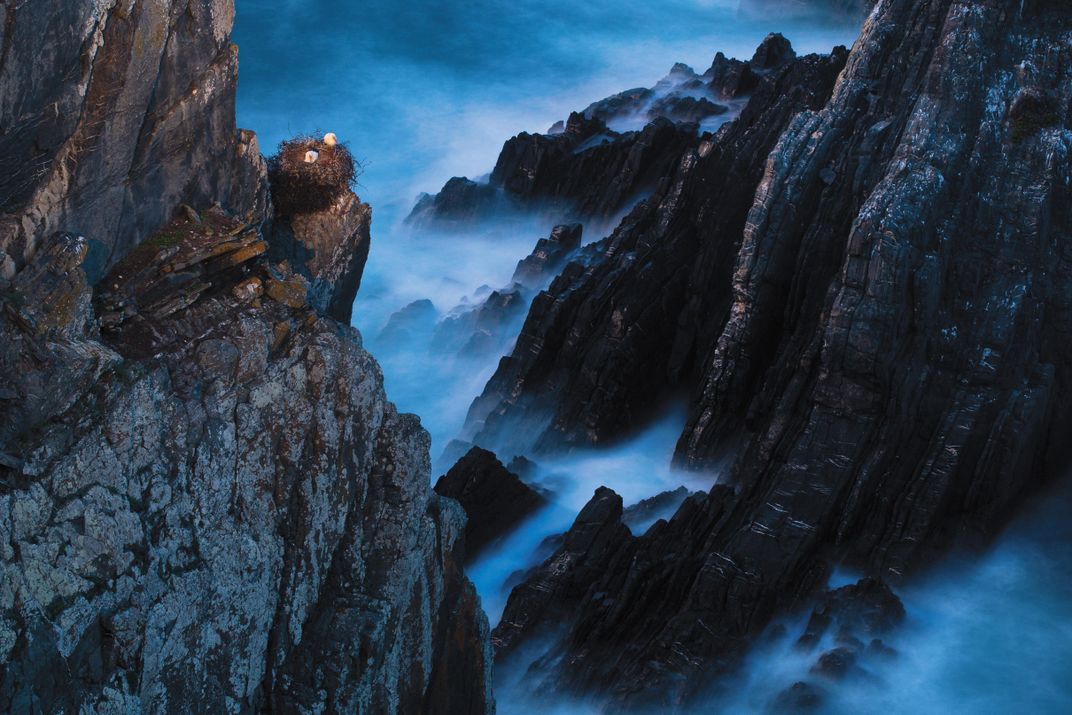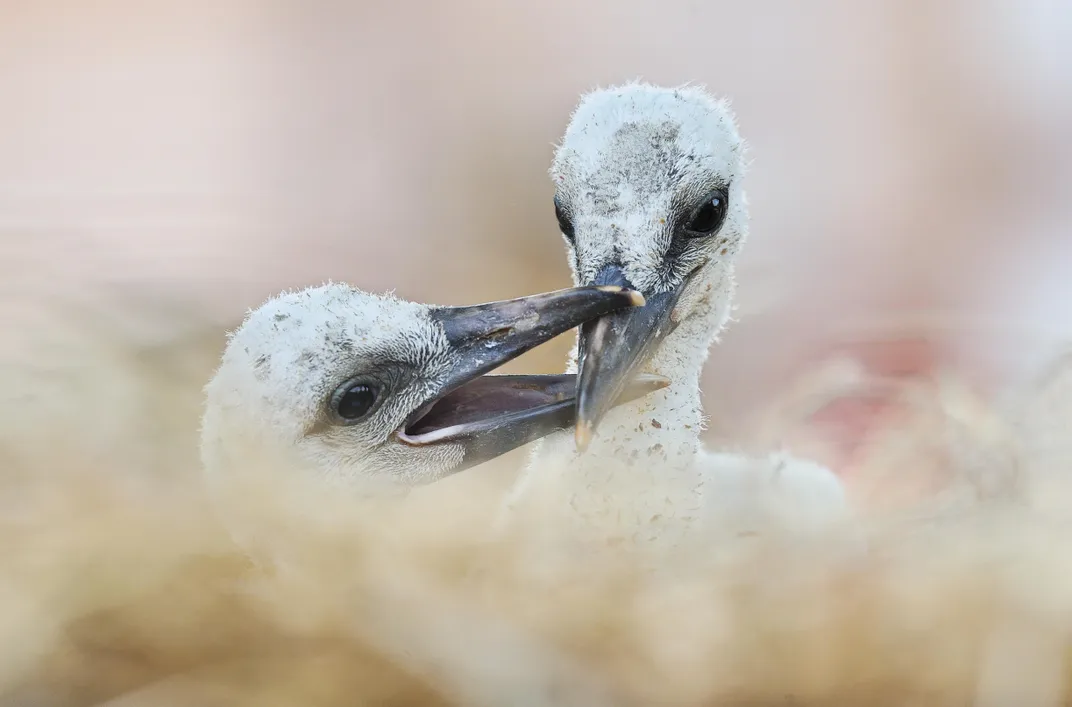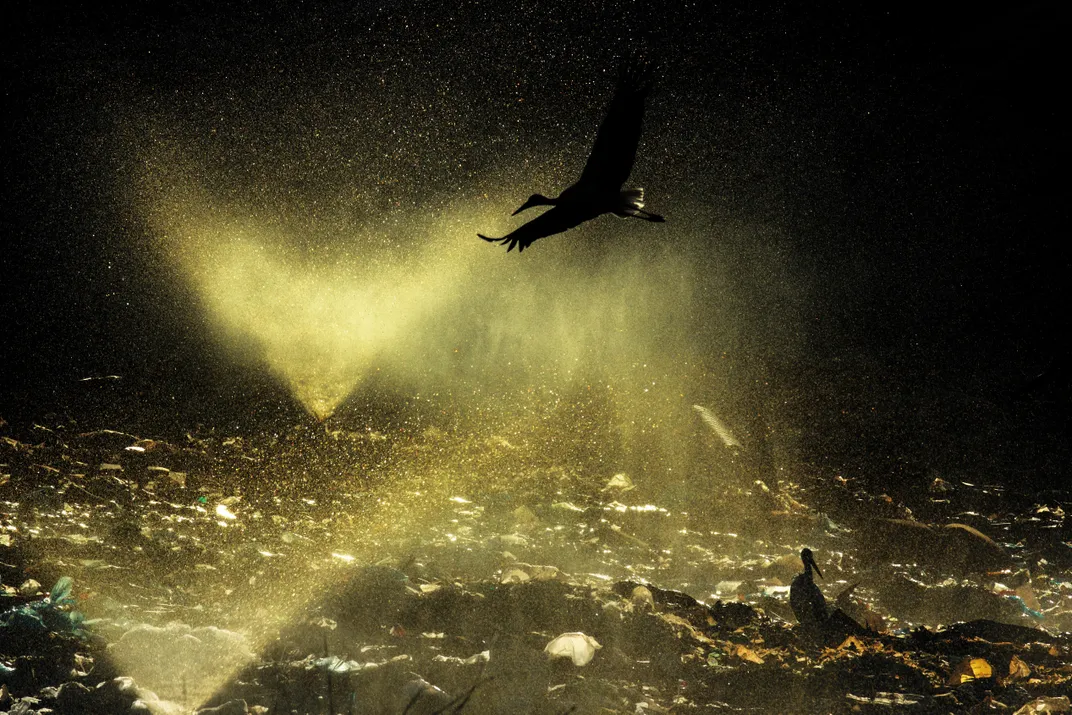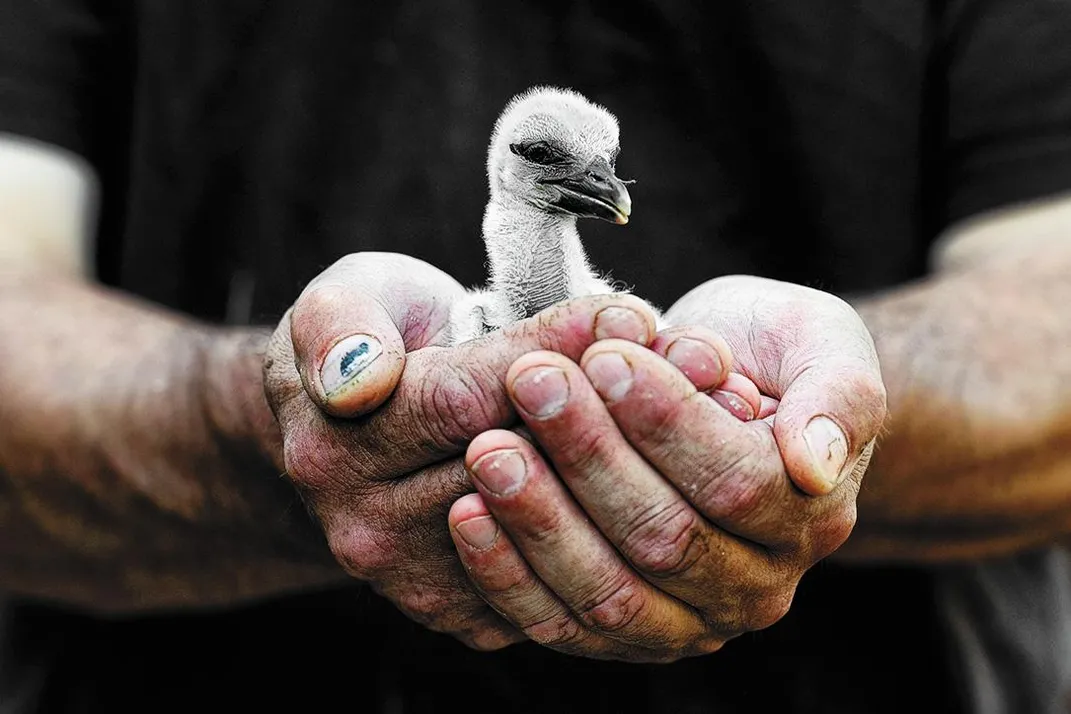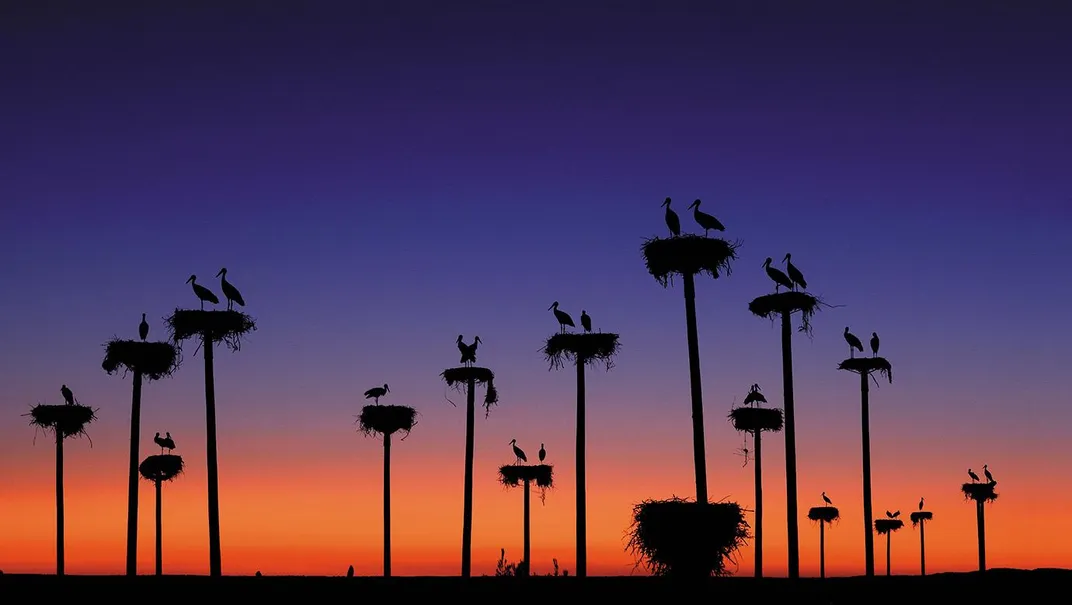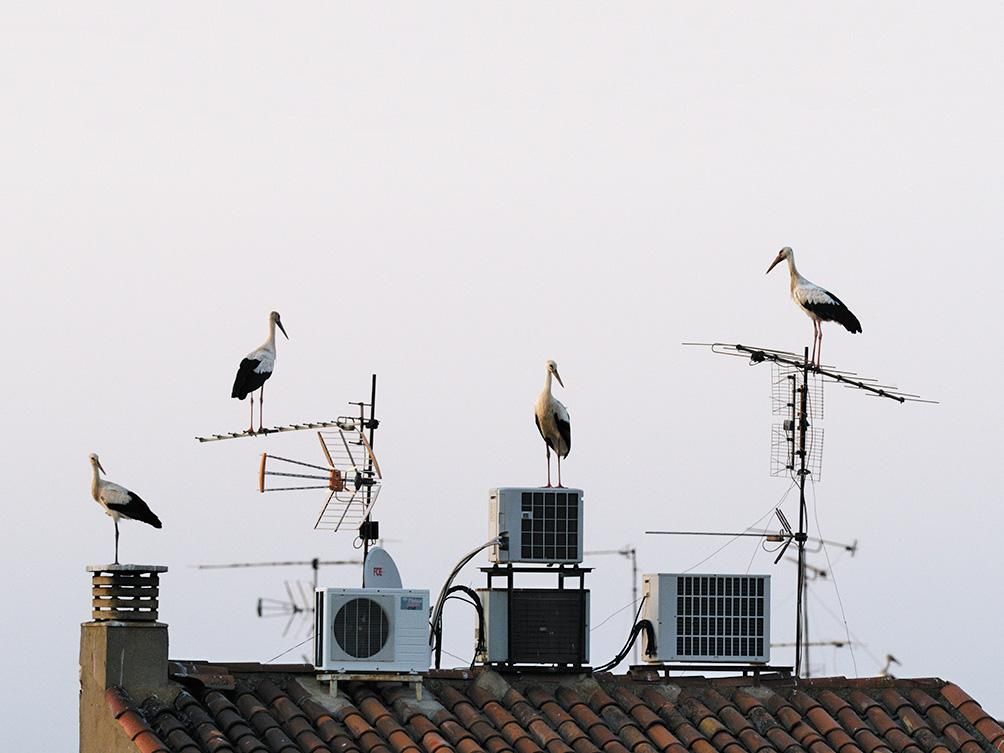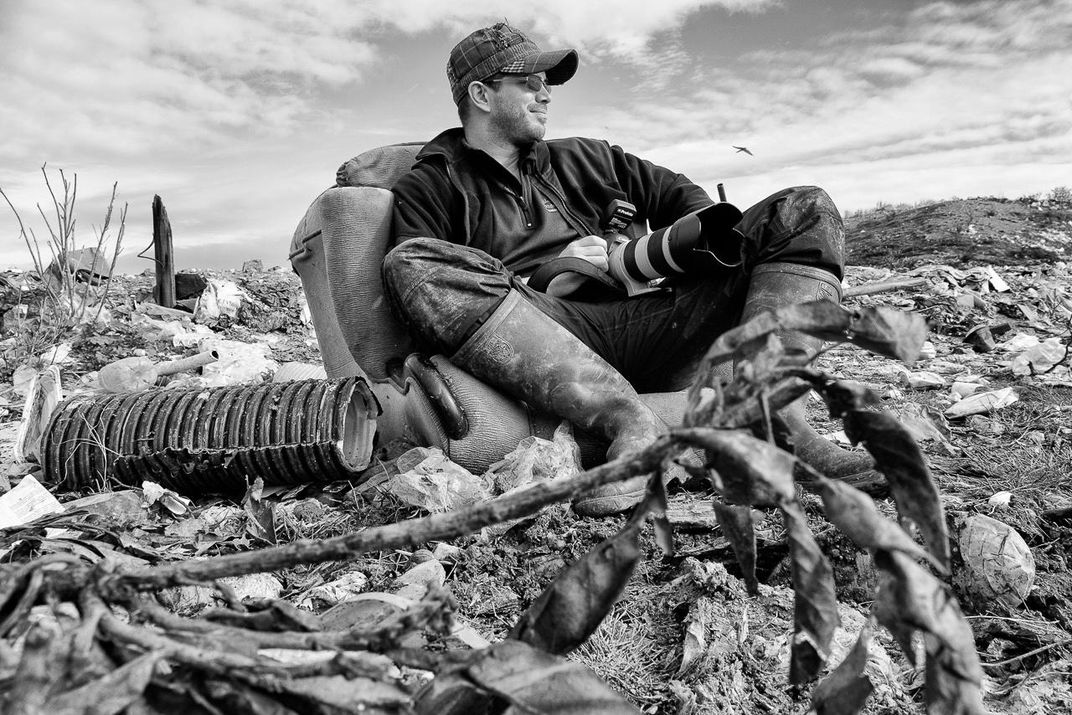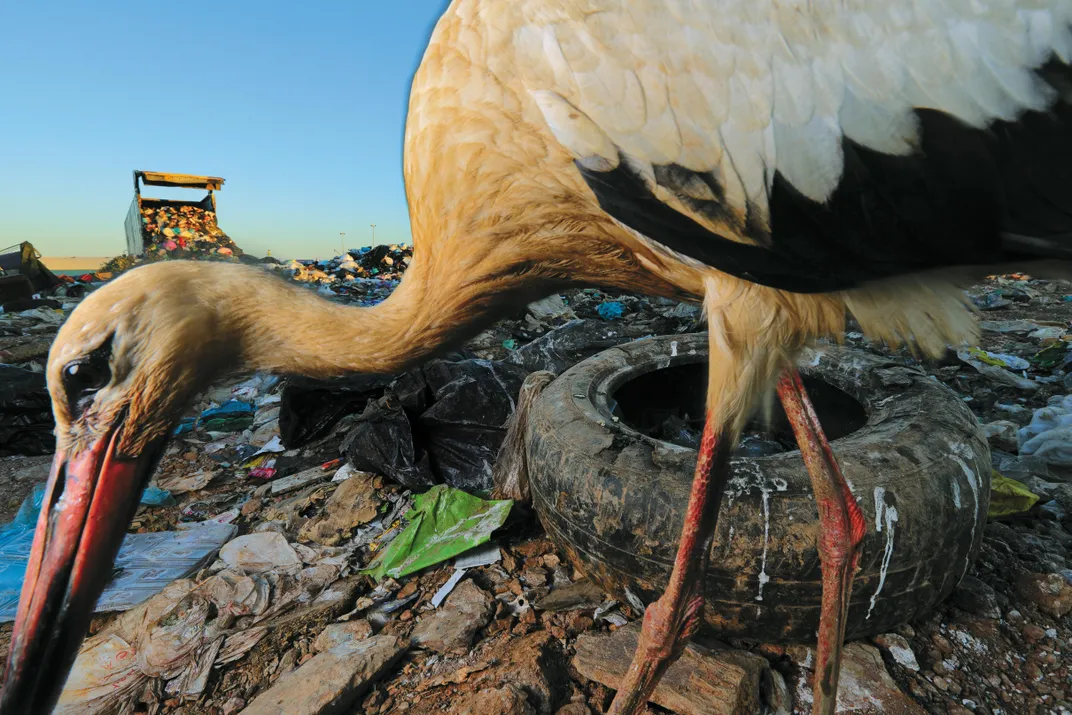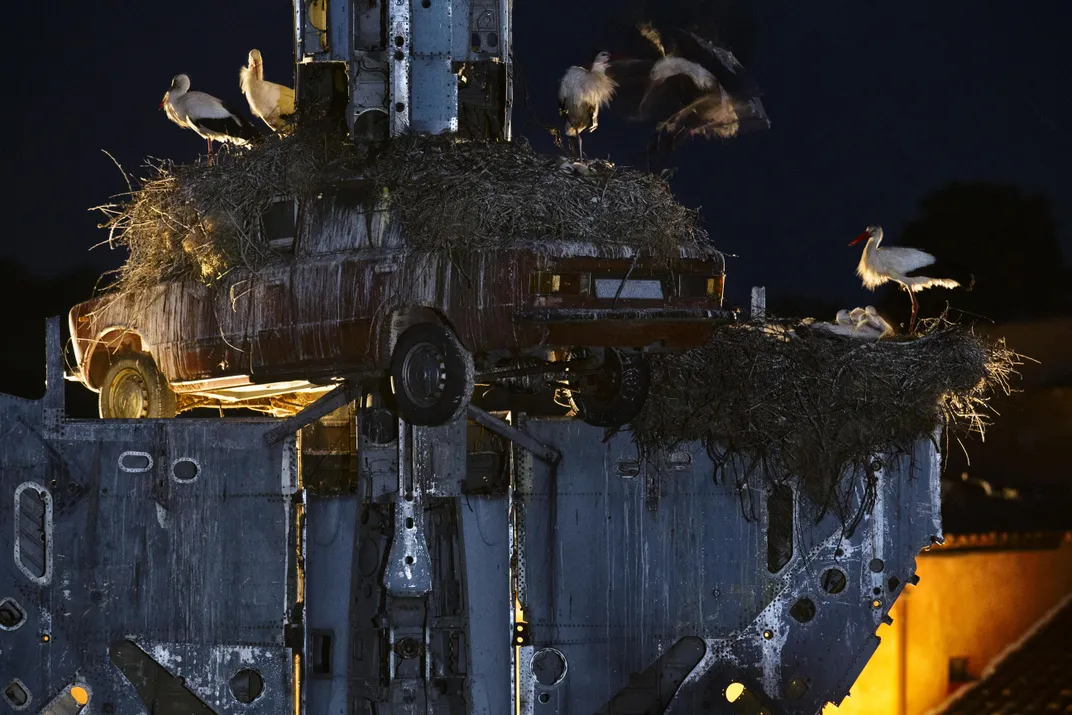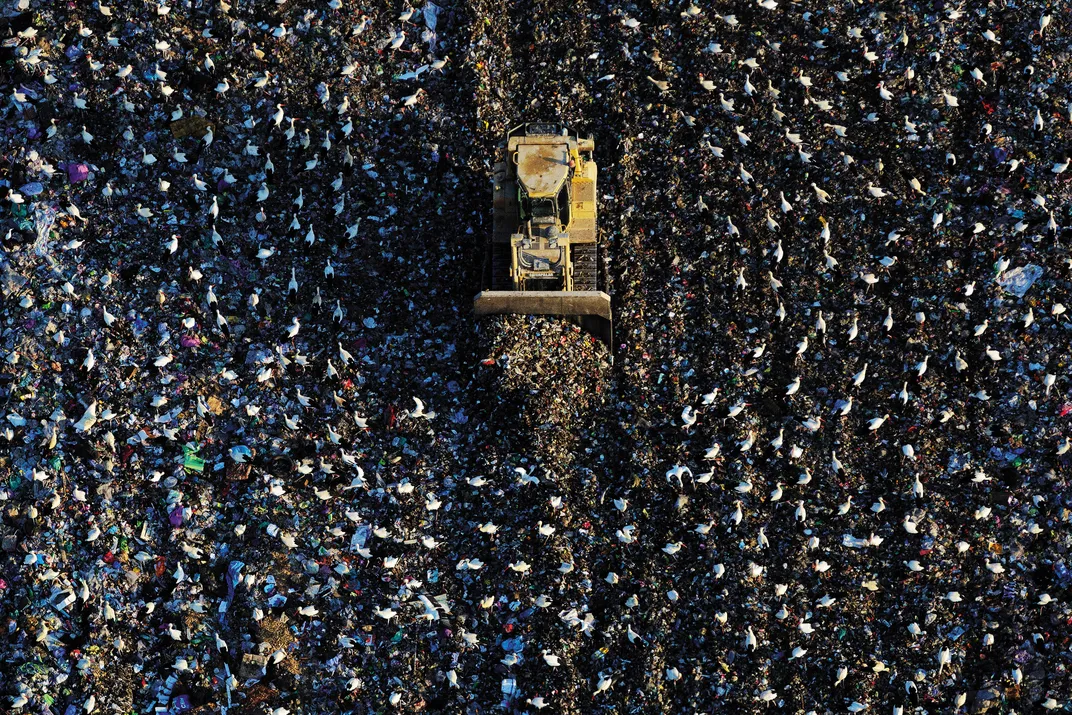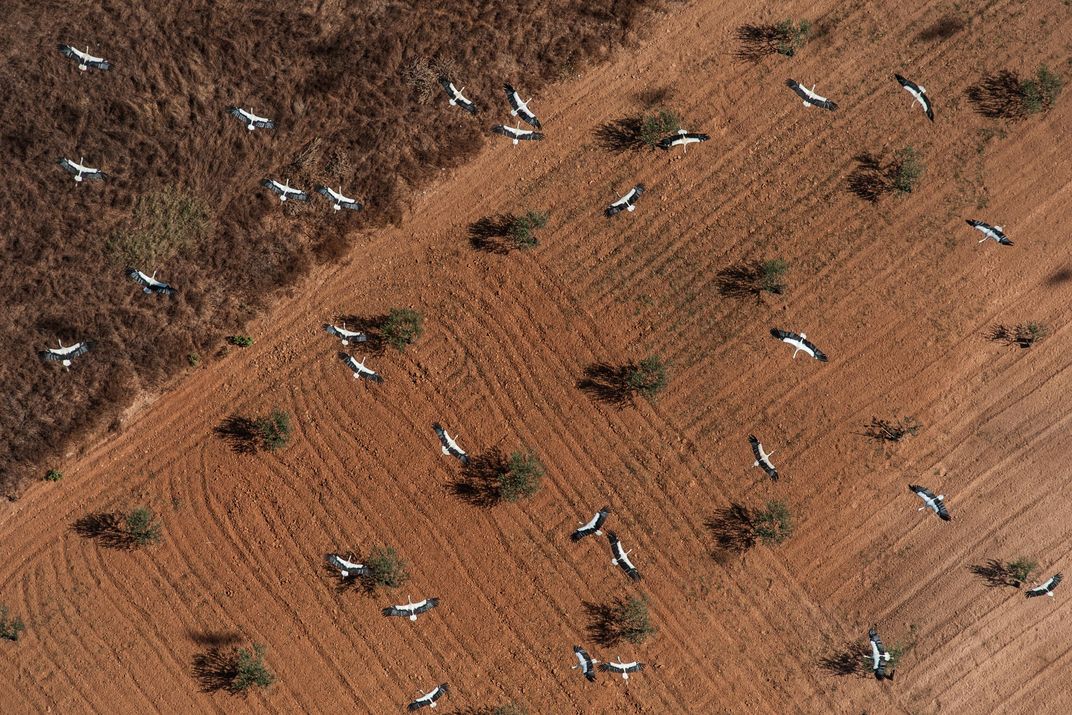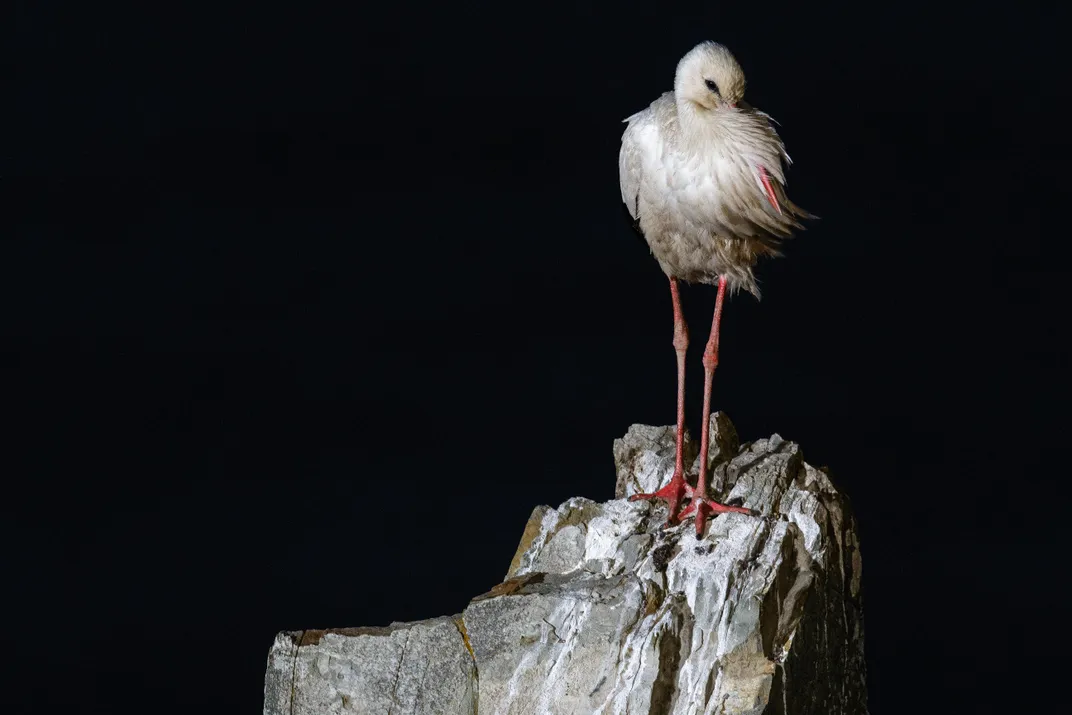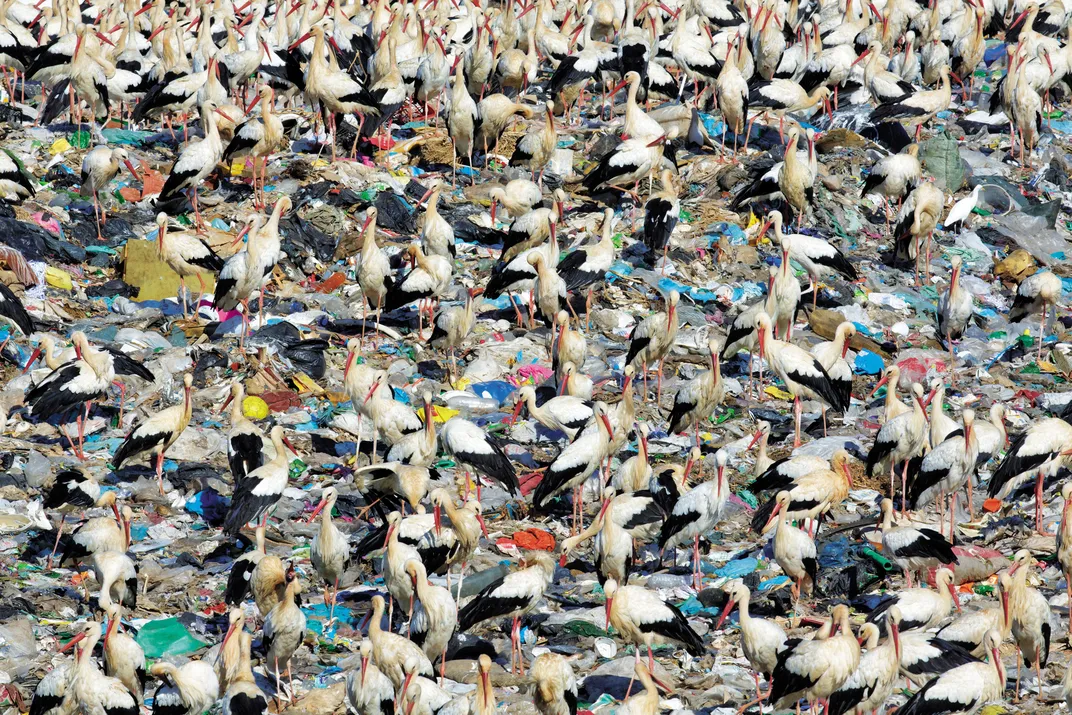These Photographs Show the Bleak New Home for the White Stork: A Landfill
Dutch wildlife photographer Jasper Doest followed the path of the white stork’s migration route, forever altered by human activity
The pale bird wades into the pond on bright red legs, waits for the water to still, plucks out a soul. He drops it, or maybe a whole child, down a chimney like a stone. Enemy of the serpent and king of the frogs, he is fierce. He is devoted. He takes his aged father on his back and launches into the air. He might be a deity in disguise, or your bad son. He tucks a stick into the monstrous nest he’s building on the roof, a bit of luck.
Legends like these spurred Jasper Doest, a Dutch wildlife photographer, to turn his lens on the white stork. “It is so gentle,” he said. “The way it is building the nest, the way it is preening. It’s like watching a ballet.” Doest tracked storks along the western migration route that leads from Germany, the Netherlands and other nations to the Iberian Peninsula, across the Strait of Gibraltar, then over the Sahara to wintering grounds in West Africa. In Spain, hundreds of storks wheeled overhead, the largest flocks Doest had encountered. He rushed to where they landed, only to find them circling a sea of rotting meat and ragged plastic. “I ended up on a garbage dump,” he said.
Doest found himself in the midst of an ecological tangle. Vast landfills tempt storks with heaps of chicken heads and expired sausage. Ursula Höfle, a researcher at the University of Castilla-La Mancha, has found nests lined with diapers and littered with toys including, once, a Mr. Potato Head. Lured by easy calories, fewer storks are bothering to migrate. In one study in Portugal, more than 10,000 spent the winter instead of heading south. It’s a gamble. Storks that stay risk being contaminated by heavy metals or choking on rubber bands. Researchers are studying whether a “junk food” diet shortens their long life span of 25 or 35 years. But 21st- century migration is also dangerous. Höfle’s team radio-tagged ten birds, and the two that migrated died in Africa—one in the desert, one by a road.
The landfills pose a quandary. They offend our sense of what’s natural and disrupt ancient migration patterns. Yet loss of meadow and marsh breeding grounds caused dramatic declines in many white stork populations in Western Europe in the mid-20th century. Landfills have helped revive some populations. This, too, may be disrupted. In line with European Union mandates, landfills on the Iberian Peninsula are scheduled to be covered and organic scraps composted, and the birds won’t have as much refuse to rely on. “We don’t know what is going to happen,” said José Aguirre, a biologist at the Complutense University of Madrid.
Migration is the heart of stork fables. In Europe, the spring return coincides with the birth of children conceived in midsummer, and with longer days and warmth. Easy to think they bring the babies, the blessing. Finding the storks on the dump, Doest adjusted his expectations and hunkered down in the garbage to document a different story from the one he’d planned. It was sobering to think of the symbol of new life carving a home in human waste. But then the mythological stork was always a euphemism, a fairy tale told to shield us from a messy, complex, biological reality.
